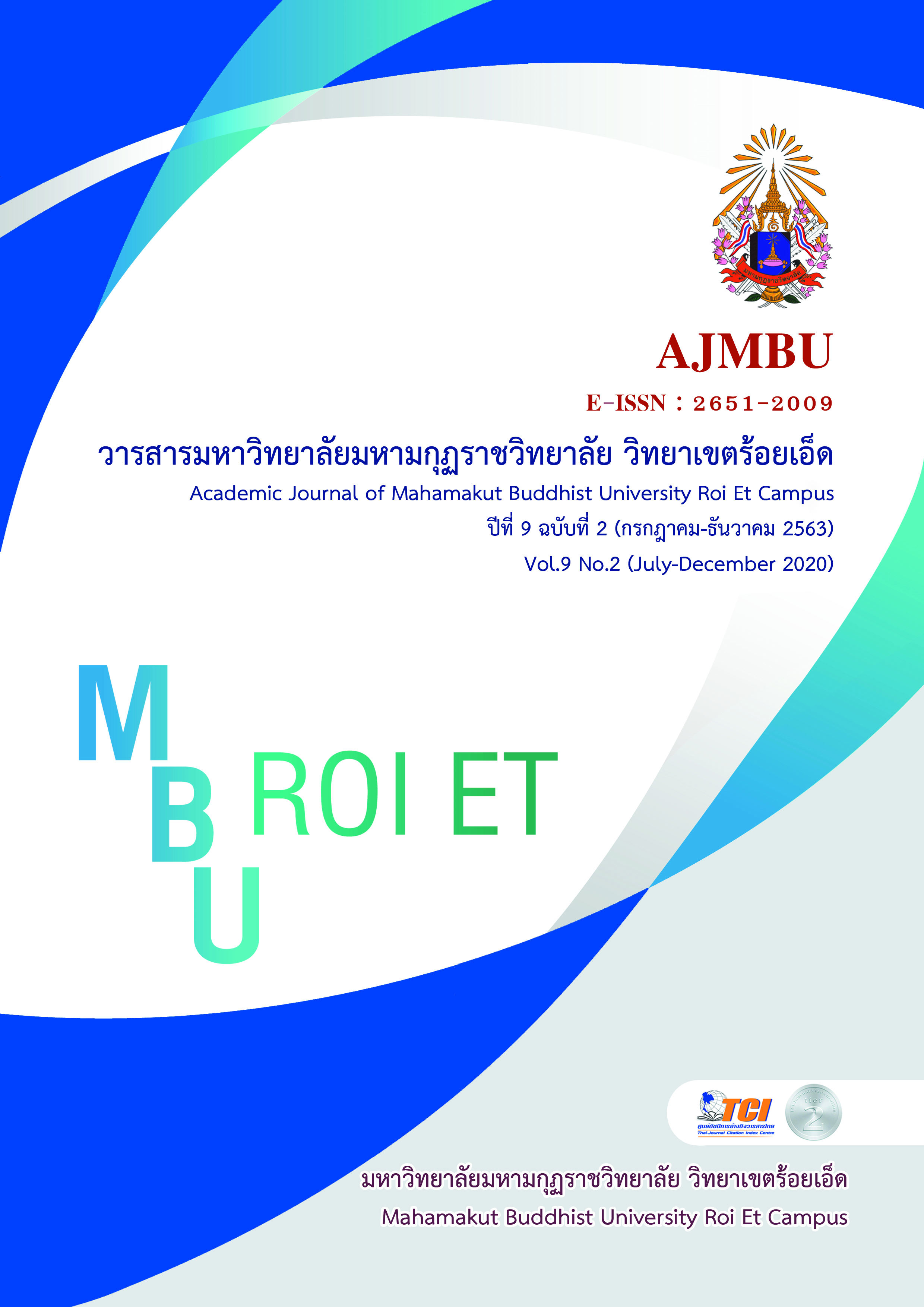The Development of STEM education Management Guidelines in Schools Under the Office of Secondary Education Service Area 32
Main Article Content
Abstract
The objective of this research article were to 1) investigate the recent state and desired state of STEM education management, 2) develop STEM education management guidelines in school under the Office of Secondary Education Service Area 32. The study was separated into 2 phases which were following; the first phase was examining the recent state and desired state of STEM education management in school. The sample was 33 schools and the informants were 132 principals and teachers which chosen by stratified random sampling. The second phase was development STEM education management guidelines in school which divided into 4 steps were the first step, investigation of best practice and accepted STEM education management. The 9 informants included principals and teachers, 3 people per a school which chosen by purposive sampling. The second step was drafting STEM education management guidelines in school. Then the third step was verification and consideration about the suitability and possibility of the guidelines which verified and ensured the guidelines by informants with using focus group discussion consisted of 7 professors chosen by purposive sampling. The fourth step was consideration of suitability and possibility of the guidelines which considered by 7 professors chosen by purposive sampling. The research tools were questionnaire, interview form, focus group discussion form, consideration form of suitability and possibility of the guidelines. The statistic used in this study was mean, standard deviation and Priority Need Index.
The research result were found: 1. The recent state of STEM education management under the Office of Secondary Education Service Area 32 was in the moderate level and the desired state was generally in the highest level whereas the value of Priority Need Index totally was at 0.75. 2. STEM education management guidelines in school under the Office of Secondary Education Service Area 32 consisted of 5 elements were 1) principles 2) objectives 3) implementation system 4) procedures included 6 aspects were development plan and policy of STEM education, STEM education curriculum, learning activities to STEM education, assessment for STEM education, human resource development for STEM education, cooperative network for STEM education and 5) achievement condition aspect which the according guidelines was suitable at the highest level and totally also possible in the highest level.
Article Details
References
กระทรวงศึกษาธิการ. (2559). คู่มือหลักสูตรอบรมครูสะเต็มศึกษา. กรุงเทพมหานคร : สถาบันส่งเสริมการสอนวิทยาศาสตร์และเทคโนโลยี กระทรวงศึกษาธิการ.
กมลฉัตร กล่อมอิ่ม. (2559). การจัดการเรียนรู้แบบบูรณาการสะเต็มศึกษาสำหรับนักศึกษาวิชาชีพครู. วารสารศึกษาศาสตร์ มหาวิทยาลัยนเรศวร. 7(3). 75-87.
เกรียงไกร ทานะเวช. (2561). การพัฒนารูปแบบการบริหารจัดการสะเต็มศึกษาในสถานศึกษาสังกัดสำนักงานเขตพื้นที่การศึกษามัธยมศึกษา เขต 27. วิทยานิพนธ์การศึกษามหาบัณฑิต สาขาวิชาการบริหารและพัฒนาการศึกษา. มหาสารคาม. มหาวิทยาลัยมหาสารคาม.
จำรัส อินทลาภาพร และคณะ. (2558). แนวทางบริหารการจัดการเรียนรู้ตามแนวคิดสะเต็มศึกษา.
วารสารวิชาการ ฉบับภาษาไทย สาขามนุษยศาสตร์ สังคมศาสตร์ และศิลปะ. 8(1). 62-74.
ฉัตรแก้ว พรมมา. (2560). แนวทางการพัฒนาการบริหารงานวิชาการตามแนวทางสะเต็มศึกษาของโรงเรียน กรับใหญ่ว่องกุศลกิจพิทยาคม. วารสารอิเล็กทรอนิกส์ทางการศึกษา. 13(3). 363-376.
บุญชม ศรีสะอาด. (2545). การวิจัยเบื้องต้น. กรุงเทพมหานคร : สุวีริยาสาส์น.
มารุต พัฒผล. (2557). การจัดการเรียนรู้ที่เสริมสร้างการรู้คิดและความสุขในการเรียนรู้. กรุงเทพมหานคร : จรัลสนิทวงศ์การพิมพ์.
สถาบันส่งเสริมการสอนวิทยาศาสตร์และเทคโนโลยี. (2557). สะเต็มศึกษา ประเทศไทย. สืบค้นเมื่อ 14 มีนาคม 2562. จาก http://www.stemedthailand.org
สถาบันส่งเสริมการสอนวิทยาศาสตร์และเทคโนโลยี. (2559). คู่มือจัดกิจกรรมสะเต็มศึกษาระดับชั้นมัธยมศึกษาปีที่ 1-3. กรุงเทพมหานคร : องค์การค้าของ สกสค.
สถาบันส่งเสริมการสอนวิทยาศาสตร์และเทคโนโลยี. (2560). คู่มือการอบรมครู ด้วยระบบทางไกล.กรุงเทพมหานคร : สถาบันส่งเสริมการสอนวิทยาศาสตร์และเทคโนโลยี.
สุธรรม ธรรมทัศนานนท์. (2561). การพัฒนารูปแบบการบริหารจัดการสะเต็มศึกษาในสถานศึกษา สังกัด สำนักงานเขตพื้นที่ การศึกษามัธยมศึกษาเขต 25. วารสารวิชาการคณะศึกษาศึกษา มหาวิทยาลัยมหาสารคาม. 24(2). 237-249.
สำนักงานเขตพื้นที่การศึกษามัธยมศึกษา เขต 32. (2562). รายงานผลการดำเนินงานสำนักงานเขตพื้นที่การศึกษามัธยมศึกษา เขต 32 ประจำปีงบประมาณ 2561. บุรีรัมย์ : สำนักงานเขตพื้นที่การศึกษามัธยมศึกษา เขต 32.
สำนักงานคณะกรรมการพัฒนาเศรษฐกิจและสังคมแห่งชาติ. (2555). การพัฒนาเศรษฐกิจ. กรุงเทพมหานคร : สำนักงานคณะกรรมการพัฒนาเศรษฐกิจและสังคมแห่งชาติ.
สำนักงานเลขาธิการสภาการศึกษา. (2559). นโยบายการส่งเสริมการจัดการศึกษาด้านสะเต็มศึกษาของประเทศไทย. กรุงเทพมหานคร : สำนักงานเลขาธิการสภาการศึกษา.
สำนักงานเลขาธิการสภาการศึกษา. (2559). รายงานการวิจัยเพื่อจัดทำข้อเสนอนโยบายการส่งเสริมการจัดการศึกษาด้านสะเต็มศึกษาของประเทศไทย. สืบค้นเมื่อ 13 มีนาคม 2562. จาก http://backoffice.thaiedresearch.org
สำนักบริหารงานการมัธยมศึกษาตอนปลาย. (2558). การศึกษากับการพัฒนาประเทศ. กรุงเทพมหานคร : โรงพิมพ์คุรุสภาลาดพร้าว.
Bybee, R. (2010). Advancing STEM Education: A 2020 Vision. Technology and Engineering Teacher.
Deming, E. W. (1995). Out of the Crisis. USA. Massachusetts : The Massachusetts Institutes of Technology Center for Advanced Engineering study.
Everard, B. and G. (1990). Morris. Effective School Management. London : Paul Chapman.
Han, S., Capraro, R. and Capraro, M. M. (2014). How Science, Technology, Engineering and Mathematics (STEM) Project-based Learning (PBL) affects High, Middle and Low Achievers Differently: The Impact of Student Factors on Achievement. International Journal of Science and Mathematics Education.


